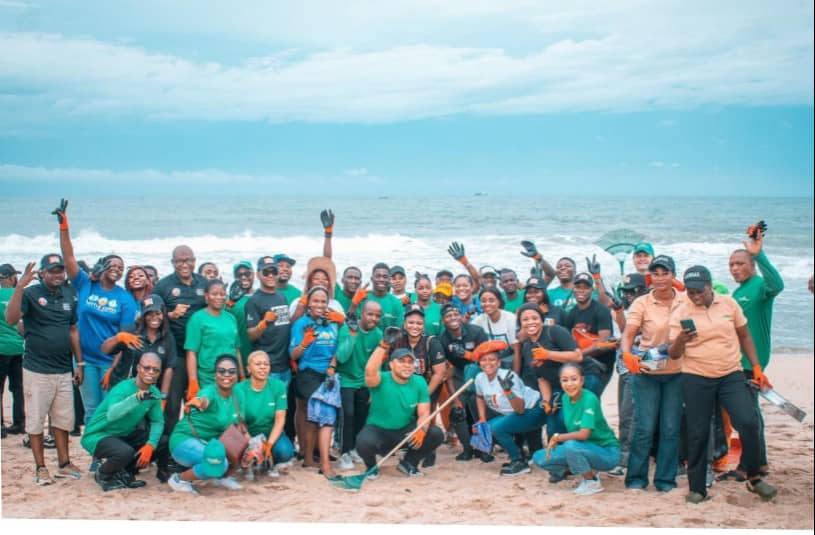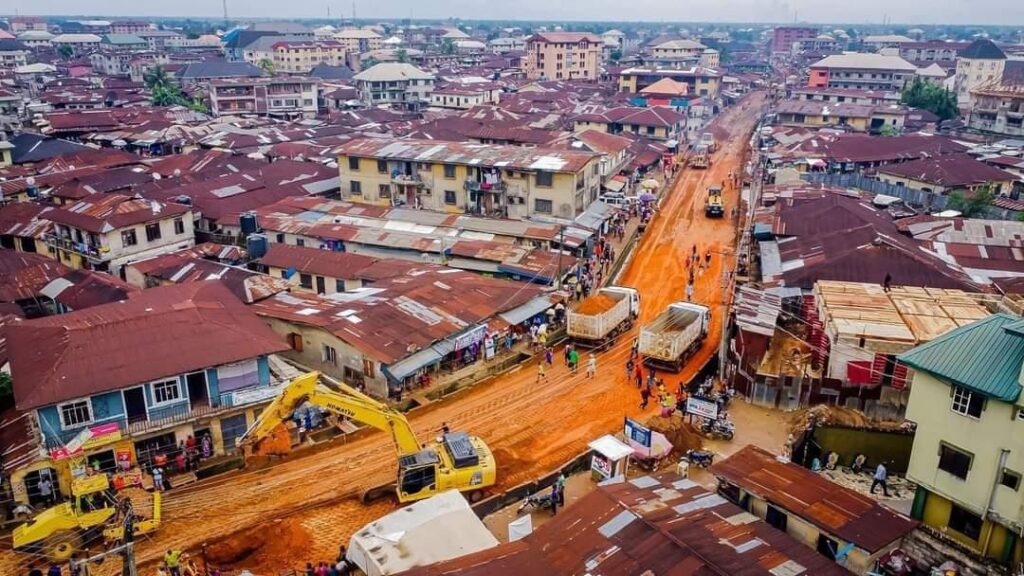
By 2025, officials and population analysts agreed that the number of people in the city and in the surrounding communities, especially, in Ogun State axis, would leap to 30 million.
Prominent among the challenges are housing, infrastructure and transportation, particularly in more than 10 local government areas (LGAs) that made up of the state, excluding local council development areas (LCDAs).
Besides, the notorious traffic jams, choking pollution, inadequate supply of potable water, insecurity and absence or inadequate social and economic needs of the people pose more challenges.
Apart from series of efforts put in place by government, the uncontrolled influx of people from virtually every states of Nigeria, including neighbouring countries, such as Benin Republic, Togo, Ghana and others, is heightening the fear that the next few years would provoke a daunting task for the authority.
Commenting on the perceived glooming picture of the future of the city, occasioned by the pervasive slums in Lagos, former President, Nigerian Institute of Town Planners (NITP), Alhaji Waheed Kadiri, said slum, rather than sickness is just a symptom showing fundamental inadequacies in planning.
According to Kadiri, slum is a combination of socio-economic and security amalgam, posed by poverty. Poverty, he said, has to do with lack of job, finance, infrastructure, social amenities and other things that make life better for the citizenry.
However, in dealing with slums, Kadiri berated the manner at which slums were being dealt with in time past, particularly, forceful relocation as it happened with Maroko residents in the early 90’s when residents were forcefully ejected.
“What is happening in Ajah area along Lekki axis is the fallout of the wrongful solution employed by the military in dealing with Maroko’s situation. Today, Ajah has become another Maroko, with the tendencies that informed the demolition of that once vibrant community now more pronounced in Ajah”, lamented Kadiri.
The peculiar Lagos environmental situation also poses serious threat to the Lagos environment. Many houses in areas such as Ajegunle in Ikorodu, Amukoko, Orile Iganmu, Ijora Badia, Ajegunle in Ajeromi and Idi Araba in Mushin are lacking toilet facilities.
In some houses, skeptics are channeled directly into the drain. The government is, therefore, challenged to invest heavily in the protection of the environment in order to avert environmental abuse and its consequences.
“People migrating from villages to the city-centre, without adequate understanding of reality on ground. Here, culture comes into play, such as open defecation as being done in the village, spreading of clothes publicly and cooking exercise in any open place, among others”.
Viewed from successes made by the Slum dwellers International (SDI) in improving of the poor communities in Africa, Latin America and Asian countries, it was observed that there is no single method for slum’s upgrading.
“There is not, and never will be, a one-size-fits-all approach to upgrading of informal settlements. Each settlement is unique in its challenges, but there are common themes. Informal settlement upgrading is not simply ‘site and service’ or the provision of a ‘top structure’ house.
“Upgrading is any intervention that improves the physical conditions of a settlement, which in turn enhances the lives of its inhabitants. The most critical emphasis is that this process should happen in situ, where communities already exist”.
SDI believes that relocations should always be as a last resort. However in situations in which they are unavoidable, such as in flood planes or along railway lines, the federations work to ensure that decisions are made in conjunction with the community.
Official admitted that planned urban improvement and slum renewal is a major challenge in an emerging model city like Lagos.
Prior to the current urban regeneration efforts by the government, Lagos used to be referred to as a jungle of various emerging slums. However, a systematic urban development and slum renewal programme, in partnership with several development agencies, has since been put in place to reverse the trend.
Consequently, various model city plans that included Ikeja Model Plan, Victoria Island/Ikoyi Model City Plan, Lekki Comprehensive Land Use and Infrastructure Master Plan have been completed while Mainland Central Model City Plan Badagry Draft Master Plan and Alimosho Master Plan have been concluded, while others are at various stages of execution.
In order to give the urban renewal programme a legal backing, the Lagos State Model City Development Law was enacted in 2009 while the State Urban and Regional Planning Law were signed on July 7, 2010.
Certainly, a megacity requires a stronger financial base. The sheer size of funding required in sustaining a megacity is beyond what a government could provide on its own. To this end, Kadiri was of the view that both federal and Ogun state governments should support Lagos in her efforts to sustain the challenges involved as a result of its mega status.
“Concentration of industries in places like Otta, Mowe, Sango, Agbara and others made it imperative for Ogun state to join Lagos in this endeavour, while federal government, by virtue of Lagos, being former federal capital with a lot of federal facilities in Lagos, should also heavily involved in he mitigation efforts”.
Speaking in the same vein, Chairman, Lagos Chapter of the NITP, Mr. Moses Ogunleye, emphasise the need to intensifying urban regeneration exercise, by focusing more on blighted areas. Besides, he advocated for renewal of old areas, particularly, areas that have more population such as Ajegunle, Ajangbadi, Badia, Makoko and others.
According to Ogunleye, for the fact that many of the old slum areas are not in hidden locations make it easier for government to incorporate them in its regeneration programmes. “What we need to prevent now is new slums no to be created as a result of people’s influx, knowing full well that no legislation that frown against migration to the city. But government will do well if it opens up new settlement with the necessary infrastructure put in place”.
Although, government has embarked on infrastructure renewal projects that include the execution of on-going projects such as the light rail scheme from Orile to Mile 2, the redevelopment of the Lagos-Badagry expressway into ten lanes incorporating BRT lanes and light rails, on-going reconstruction of the Mile 12-Ikorodu road incorporating BRT lanes, the recently commissioned Ejigbo- Ajao Estate link bridge, recovery and redevelopment of loops hitherto used by criminals as hide-outs among others could only become feasible with a sustained system of funding. Notwithstanding the profoundness of these projects, it appears that much still need to be done to meet the need of millions of commuters on daily basis.
The condition of the environment also constitutes a major challenge to the Lagos megacity city. Lagos, for instance, generates 10,000 tonnes of waste daily, almost three times higher than what the whole of Ghana generates daily. Also, the kind of industrial pollution experienced in Lagos is second to none in the country.
Maintenance of law and order is another major challenge of the Lagos mega city.
Observers believed that he Lagos State Security Trust Fund was established, as a creative measure to effectively fund the security needs of the state on a sustainable basis. This was accompanied by the re-organisation and strengthening of the state’s anti-crime outfit, the Rapid Response Squad, through the infusion of additional men, acquisition of new telecommunication equipment, bullet proof vests and uniforms, introduction of new allowances to boost the morale and provision of additional patrol vehicles to enhance performance. In addition, provision of crime fighting helicopter and installation of CCTV equipment has not only served as deterrent but has actually reduced crime in the state.
However, the re seems to be resurgence of criminal activities in the metropolis in the recent time, with high rate of robbery incidents. Improved access to potable water is one other vital challenge of the Lagos mega city. To tackle this challenge, the state government evolved the Lagos State Water Supply Project as the arrowhead of a 15-year expansion programme with the aim of increasing the access of the population to public water supplies, improving the efficiency of water supplies and strengthening of the Lagos Water Corporation [LSWC].
The project entails expanding water supply facilities, transmission and distribution systems, rehabilitation of existing, improved administrative infrastructure and institutional support. The first phase involves the construction of 15 mini micro water works that have the capacity of producing 30 million gallons per day across various parts of the State to improve accessibility.
Though a mega city status is conferred on a city as a result of population growth, building and sustaining a model mega city is not a tea party as reflected in the Lagos experience. In the case of Lagos, a major challenge, however, is how to cope with the ever-increasing population of Lagos with its attendant consequences on infrastructure. Nevertheless, the success story of past years in Lagos has revealed that as a people, we have the capacity to chart a better course for ourselves. This, of










